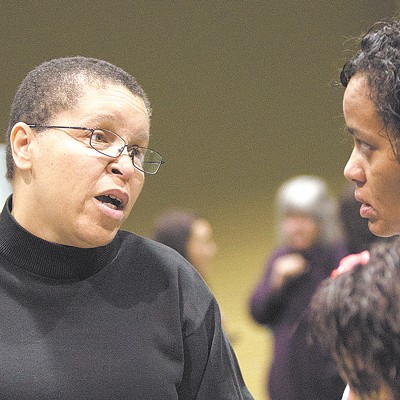It's easy for events like D-Day to fade into soft focus, losing their hard, defining edges. American independence has become a simple tale of Gen. Washington outbraving the British, while D-Day is often reduced to Gen. Eisenhower's genius plan.
To take in a fuller account as we celebrate our freedom, consider July 4, 1944 — 70 years ago exactly. In a camp just outside the village of Carentan, just a month after D-Day, American soldiers with the U.S. Army's 83rd Division were about to get their first taste of battle.
There's no record of whether the brass invoked the import of that particular day for American soldiers, but whatever personal thoughts ran through their heads, they knew their mission: to liberate the nearby village of Sainteny, then on to Berlin.
It did not go well. Theirs was among the first skirmishes in the three-week Battle of the Hedgerows. Germans dug in behind these massive fences of vegetation, launching their attacks, row by bloody row.
"God we lost a lot of men," wrote soldier James Shonak in 2001. Shonak, from Massachusetts, a member of the 331st Infantry attached to the 83rd, shared his memories with David Curry, who maintains a website devoted to the history of the 83rd.
"My worst nightmares," Shonak added, "are still in those rows."
The 331st went after a farmhouse overlooking the battlefield, where Germans eerily played an Al Jolson record from a window. At 10 minutes before 8, their commander was taken by a sniper; next, four German tanks rolled in, delivering indiscriminate death from their 75mm cannons. It wasn't even noon yet. Radio communication went dead, and runners sent to HQ were never seen again. As night fell, a group of soldiers stuck behind the line decided to take their chances and sprint back, drawing heavy German fire. Only a few made it.
Morning revealed that the day of fighting gained just 200 yards of French soil — a field littered with some 1,400 American dead and wounded.
The Americans returned on July 5, and fought day after day, hedgerow by hedgerow. On July 10, when they took Sainteny, the casualty count hit 3,200. But by April of 1945, what was left of the 83rd had made it 1,400 miles, to just outside Berlin.
Victory was sweet, and that's the part we like to remember. But the sacrifice was profound, in so many similar battles, and that's the part we can't forget.
"Those boys of the 83rd are heroes... Their sacrifice will live on forever after we are long gone," wrote Shonak, who died in 2003. "They will never be forgotten, ever." ♦

























